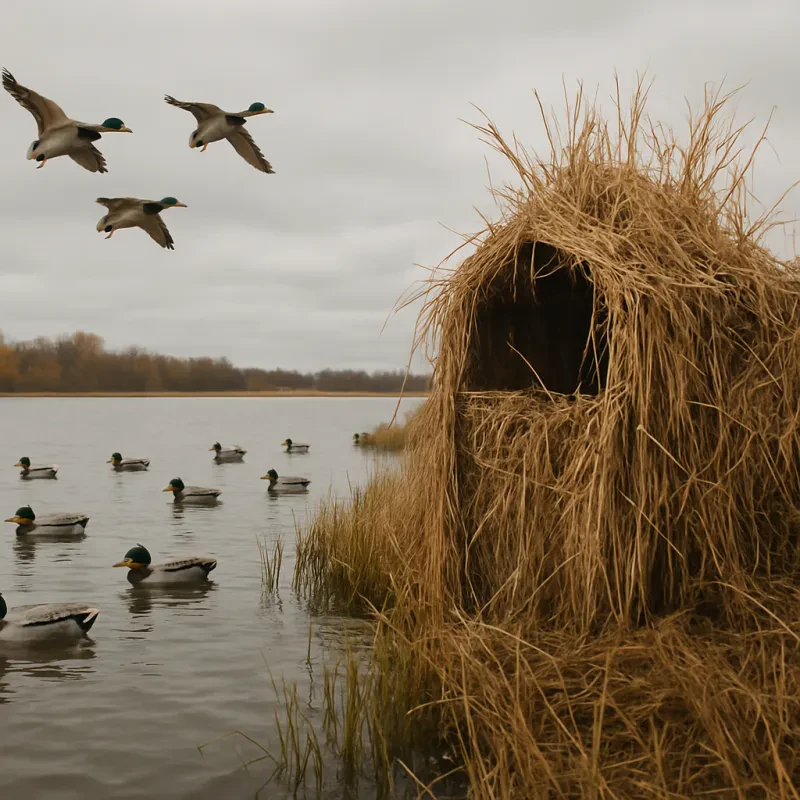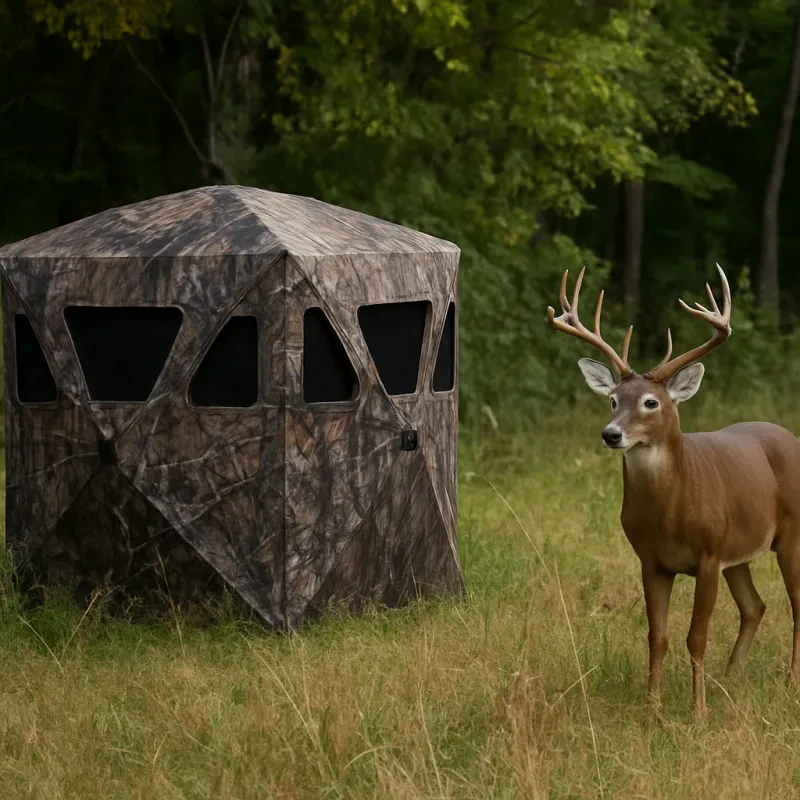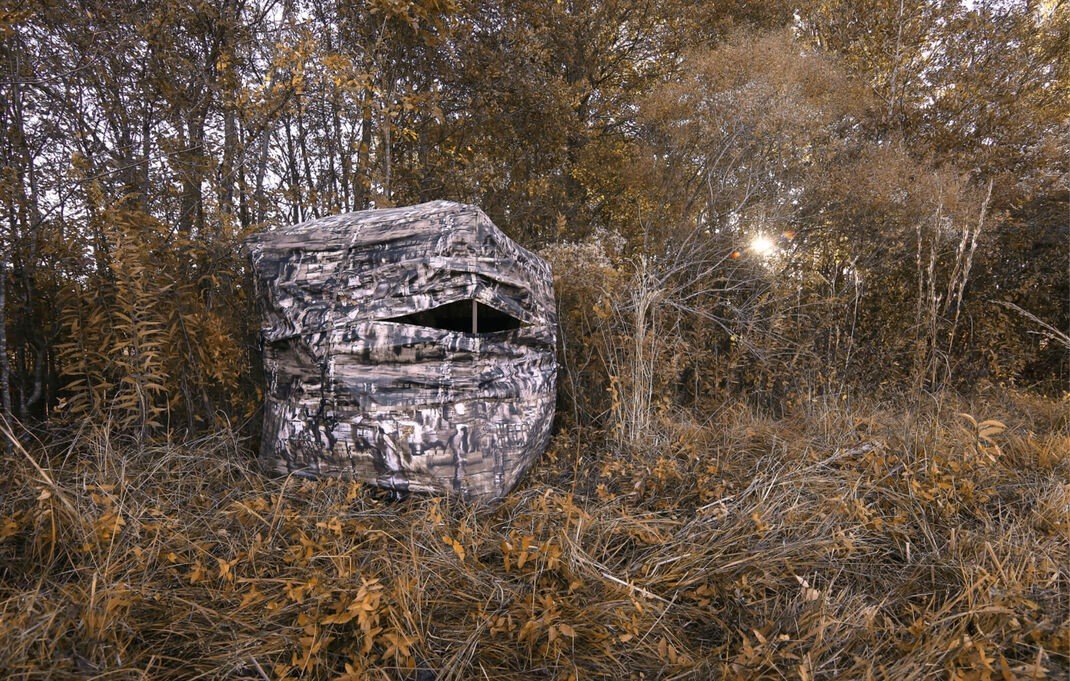When it comes to maximizing your hunting experience, choosing the right location for your compact hunting blind is crucial. The effectiveness of your blind can greatly depend on its positioning in relation to natural features, animal movement, and even the time of day. Start by scouting the area and looking for signs of wildlife: tracks, droppings, and feeding areas are all good indicators of where to set up.
Avoid placing your compact hunting blind in open spaces where it can easily be spotted by animals. Instead, look for spots with natural cover like trees, bushes, or hills. These elements help conceal your presence, making it less likely that game will sense something is amiss. Additionally, consider the wind direction; setting up downwind from where you expect animals to come from can improve your chances of a successful hunt.
Lighting is another important factor when selecting a location for your compact hunting blind. Early mornings and late afternoons are often prime times for animal activity, and you want to ensure that your blind is positioned to take advantage of this. Ideally, choose a spot that allows for plenty of visibility but also offers shadows and cover during these peak hours, ensuring that you can remain undetected.
Take into account the terrain and accessibility as well. You want to be able to get in and out with minimal disruption to your surroundings. If you're hiking to your blind, make sure the path you choose is quiet and unobtrusive. The fewer disturbances you create, the better chance you have of encountering game during your hunt. Ultimately, taking the time to find the perfect spot for your compact hunting blind can significantly enhance your hunting experience.
Key Features to Look For
When searching for the perfect compact hunting blind, several key features can enhance your hunting experience. First and foremost, portability is crucial. A lightweight and easily transportable design allows hunters to set up quickly in various locations. Look for blinds that fold down easily and come with a carrying bag, making them simple to take on every hunting trip.
Another essential feature to consider is the material used in the construction of the compact hunting blind. Durable, weather-resistant fabrics can protect you from rain, wind, and sun exposure, ensuring comfort throughout your outing. Additionally, look for blinds with UV-resistant coatings to minimize wear and tear from sunlight over time.
Concealment is a vital aspect of any hunting blind. A good compact hunting blind should blend seamlessly with its surroundings to keep you hidden from game. Opt for blinds that come in natural colors or patterns like camouflage, and ensure they have effective mesh windows for visibility without compromising your cover.
Finally, consider the ease of setup and takedown. A compact hunting blind that can be assembled in a matter of minutes allows you to focus more on hunting and less on gear. Look for designs that feature intuitive mechanisms and clear instructions, ensuring that you’re ready to go with minimal hassle.
Tips for Effective Camouflage
When it comes to using a compact hunting blind, effective camouflage is key to staying hidden from your prey. Here are some practical tips to help you blend in with your surroundings and improve your chances of a successful hunt.
Firstly, choose the right location for your compact hunting blind. Look for areas that naturally offer cover, such as dense foliage, tall grasses, or even near tree lines. Setting up in these spots will enhance your natural camouflage and make it harder for animals to spot you. Additionally, make sure to set up your blind in a way that the sun is behind you to avoid casting shadows that could give away your position.
Next, consider the color scheme of your compact hunting blind. While most blinds come in preset patterns, you can enhance them by adding natural elements like branches, leaves, or mud to break up the outline. This type of customization allows you to match your blind to the specific environment, making it less conspicuous. Remember that blending into the background is essential, so make sure the colors and textures on your blind align with what’s around you.
Lastly, always keep movement to a minimum when you’re inside your compact hunting blind. Even slight motions can catch the eye of curious animals. Practice remaining still and quiet, and consider using equipment like a gear holder or a shooting rest to keep your hands free. By maintaining a low profile, you’ll be more successful in staying hidden while waiting for the perfect moment to make your shot.
Maintenance for Longevity and Durability
To ensure your compact hunting blind lasts for many seasons to come, regular maintenance is essential. A little care goes a long way in preserving its durability and functionality. Start by inspecting the fabric for any signs of wear or tear after each use. If you notice any small rips or holes, repair them promptly with an appropriate patch kit. This will prevent further damage and keep your blind in top shape.
Cleaning your compact hunting blind is another crucial aspect of maintenance. After a hunting trip, make sure to remove any dirt, mud, or debris that may have accumulated on the exterior and interior. Use a soft brush or cloth along with mild soap and water to wipe down the surfaces. Avoid harsh chemicals that could damage the fabric or diminish its camouflage capabilities.
Additionally, pay attention to the structural components of your compact hunting blind. Check the poles and support frames for any signs of bending or corrosion. If your blind includes zippers, apply a lubricant to keep them functioning smoothly. Store the blind in a cool, dry place when it's not in use, as excessive heat or moisture can lead to deterioration.
By following these simple maintenance tips, you can ensure that your compact hunting blind remains a reliable companion on all your hunting adventures. Regular upkeep will enhance its longevity and help you get the most out of your investment, allowing you to focus on what really matters—enjoying the hunt.


